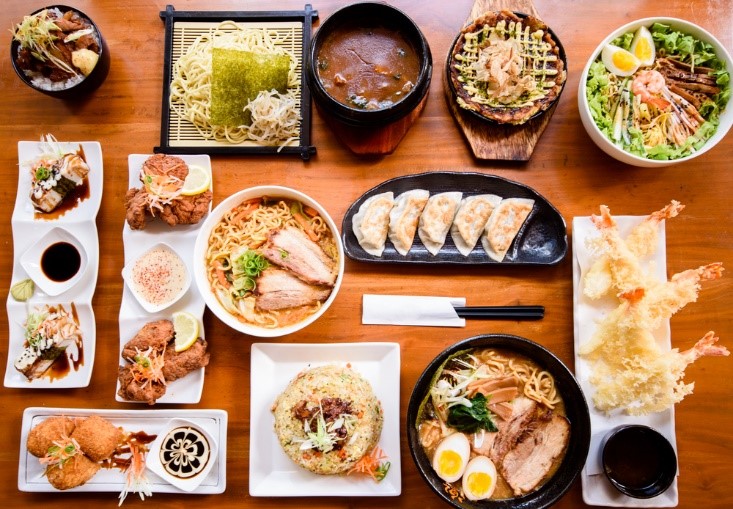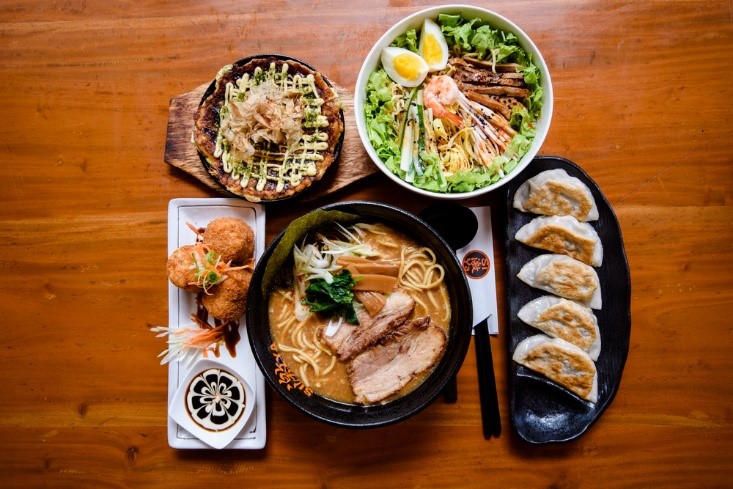Japanese cuisine has earned its place among the most celebrated culinary traditions in the world. Renowned for its delicate flavors, attention to detail, and artistic presentation, Japanese cuisine extends beyond traditional meals to include a vast array of delectable snack foods. These tantalizing treats not only provide a quick and convenient bite but also offer a glimpse into the rich cultural heritage of Japan.
In this article, we will delve into the world of Japanese snack food and explore some simple yet mouthwatering recipes that you can easily make at home.
Top 8 Must-Try Japanese Snack Foods: Exploring a World of Delicious Flavors
1. Takoyaki: Octopus-filled Delights
Takoyaki, the iconic street food from Osaka, is a true delight for snack lovers. These golden, crispy balls are filled with tender octopus and a medley of flavors. Making takoyaki requires a special pan with half-spherical molds, but it’s worth the investment. To prepare this savory snack, mix a batter consisting of flour, dashi (Japanese stock), eggs, and finely chopped green onions. Pour the batter into the molds, add a small piece of octopus to each one, and cook until golden brown. Serve your takoyaki piping hot, drizzled with takoyaki sauce, mayonnaise, and bonito flakes for an authentic touch.

2. Onigiri: Portable Rice Balls
Onigiri, or rice balls, are a staple in Japanese cuisine. These convenient and tasty treats make for a perfect snack or a light meal on the go. To create onigiri, cook short-grain Japanese rice and let it cool slightly. Wet your hands with water, sprinkle a pinch of salt, and take a small handful of rice. Form it into a triangular or cylindrical shape, and make a hollow in the center to hold your filling. Popular fillings include umeboshi (pickled plum), grilled salmon, or seasoned seaweed. Wrap your onigiri in a sheet of nori (seaweed) to keep it fresh and add an extra layer of flavor.
3. Yakitori: Grilled Skewers of Delight
Yakitori, succulent grilled skewers of chicken, is a popular Japanese street food that can be enjoyed as a snack or as part of a meal. The key to mastering yakitori lies in the marinade and the grilling technique. To prepare the marinade, combine soy sauce, mirin (sweet rice wine), sake, sugar, and grated ginger. Cut boneless chicken pieces into bite-sized chunks and marinate them for at least 30 minutes. Thread the chicken onto skewers and grill over charcoal or under a broiler until they are nicely charred and cooked through. Baste them with the marinade while grilling for added flavor.
4. Mochi: Sweet and Chewy Delicacies
Mochi, a traditional Japanese sweet treat, is made from glutinous rice pounded into a soft, chewy texture. It comes in various shapes and flavors and is often enjoyed during special occasions and festivals. Making mochi at home requires sticky rice flour, which can be found in Asian grocery stores. Mix the flour with water and steam it until it becomes a smooth dough. Shape the dough into small balls and coat them with kinako (toasted soybean flour), matcha powder, or sweetened red bean paste for a delightful finish.
5. Tempura: Light and Crispy Delicacy
Tempura is a beloved Japanese dish consisting of battered and deep-fried vegetables or seafood. It’s a perfect snack that showcases the art of delicate frying. To prepare tempura, dip your choice of ingredients such as shrimp, sweet potatoes, bell peppers, or zucchini into a simple batter made with flour, egg, and ice-cold water. Fry them in hot vegetable oil until they turn golden and crispy. Serve your tempura with a dipping sauce called tentsuyu, made from soy sauce, mirin, and dashi. It’s a truly satisfying and addictive snack.

6. Dorayaki: Pancake-like Sweet Treats
Dorayaki is a classic Japanese dessert consisting of two fluffy pancakes sandwiched together with a sweet filling. The most traditional filling is anko, a sweet red bean paste, but you can also experiment with other fillings like whipped cream, Nutella, or fruit preserves. To make the pancakes, whisk together eggs, sugar, honey, and a touch of baking powder. Fold in sifted flour and gently mix until smooth. Cook small pancakes on a non-stick pan, flipping them when bubbles form on the surface. Once cooked, spread your desired filling between two pancakes and enjoy this delightful snack.
7. Gyoza: Savory Dumplings
Gyoza, or Japanese dumplings, are a popular snack and appetizer. These flavorful bite-sized delights are usually filled with a mixture of ground pork, cabbage, garlic, ginger, and seasonings. To make gyoza, place a spoonful of filling in the center of a gyoza wrapper. Moisten the edges with water, fold it in half, and crimp the edges to create a pleated effect. Pan-fry the gyoza until the bottom turns golden brown, then add water and cover the pan to steam them. Once cooked, serve your gyoza with a dipping sauce made from soy sauce, rice vinegar, and chili oil.
8. Okonomiyaki: Versatile Savory Pancakes
Okonomiyaki is a savory pancake that can be customized with various ingredients to suit your taste. The word “okonomi” means “what you like” in Japanese, emphasizing the versatility of this dish. To make okonomiyaki batter, combine flour, dashi, eggs, shredded cabbage, and your choice of fillings such as sliced pork, shrimp, or vegetables. Cook the batter on a griddle or in a frying pan until both sides are golden brown and crispy. Finish off your okonomiyaki by topping it with a generous drizzle of okonomi sauce, Japanese mayonnaise, bonito flakes, and dried seaweed.
Also Read: Learn How to Cook Japanese Food: Expert Techniques, Knife Skills, and Balancing Flavors
The Bottom Line
Exploring the world of Japanese snack food offers a delightful culinary adventure. From savory takoyaki to sweet dorayaki, these homemade treats allow you to experience the flavors and artistry of Japanese cuisine. Whether you’re making tempura, gyoza, or onigiri, each snack reflects the simplicity, quality, and attention to detail that are hallmarks of Japanese food culture. So, immerse yourself in these recipes, savor the flavors, and share the joy of Japanese snacking with loved ones.











